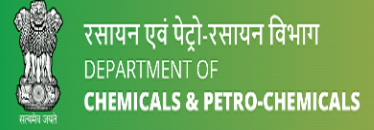Frequently Asked Questions
1.What is CWC?
Ans. Chemical Weapons Convention is universal non-discriminatory, multilateral, Disarmament Treaty that bans the development, production, acquisition, transfer, use and stockpile of all chemical weapons. The Treaty puts all the States Parties on an equal footing. Countries having stockpiles of chemical weapons are required to declare and destroy them in a specified time frame and those who produce and use chemicals that can be easily converted into chemical weapons have to be open and transparent about the use they put these chemicals to.
2. Who are the signatories and Member States to the CWC?
Ans. The CWC was opened for signature on 13th January, 1993. As on 6th May 2014, there are 193 Countries are States Parties (i.e. Member Countries to the CWC). The list of 193 Countries are placed at Annexure 1.
3. What are the measures adopted by India to implement its obligations under the Convention?
Ans. (I). The CWC Act, 2000 was passed by the Parliament and assented to by the President of India. The Act came into force on 1st July, 2005 through the Gazette Notification No. S.O 818(E) dated 14th June, 2005.
(II) The National Authority for Chemical Weapons Convention (NACWC) has been set up as an office of the Cabinet Secretariat, Government of India in 1997 to fulfill, on behalf of the Government of India, the obligations under the Chemical Weapons Convention and to act as the national focal point for effective liaison with the Organisation for the Prohibition of Chemical Weapons (OPCW) and other State Parties on matters relating to the Convention
(III) India destroyed all chemical weapons stockpiles and production facilities in accordance with the provisions of CWC.
4. What are the important obligations of the Convention?
Ans.(I). Each State party must give the legal force and effect through a ratification processthat is unique to its national law.
(II) Each State party must designate or establish a National Authority to be the focal point for effective liaison with OPCW and other States Parties.
(III) Each State Party having chemical weapons or their production facilities must destroy in accordance with CWC provisions.
(IV) Declaration of plant sites for various categories of organic chemicals & their verification (Inspections) are two important obligations on chemical industries.
(V) Each State Party must provide other states Parties with the appropriate form of legal assistance as to CWC activities.
5. What is “Declaration” under CWC ? What purpose does it serves ?
Ans. Three Schedules of the chemicals which have been annexed to the Convention are required to be declared. These are:-
(i) Schedule-1 Chemicals (i.e. Chemical Weapons);
(ii) Schedule-2 Chemicals (i.e. precursors to Chemical Weapons); and
(iii) Schedule-3 Chemicals (i.e. dual use chemicals).
The list of these three Schedule Chemicals is placed at
(i) Schedule-1 (https://www.opcw.org/chemical-weapons-convention/annexes/annex-chemicals/schedule-1)
(ii) Schedule-2 (https://www.opcw.org/chemical-weapons-convention/annexes/annex-chemicals/schedule-2)
(iii) Schedule-3 (https://www.opcw.org/chemical-weapons-convention/annexes/annex-chemicals/schedule-3)
The list of these three Schedule Chemicals is placed at
There is another category of declarable regime for which the Plant-sites are required to be declared. This category is called “Other Chemical Production Facilities (OCPFs)”. For chemical industry, declarations are mostly required for Schedule-2 & Schedule-3 Chemicals and plant-sites of OCPFs.
6. What are OCPFs?
Ans. OCPFs comprise of two different categories of organic chemicals and these are Discrete Organic Chemicals (DOCs) and PSF chemicals.
7. Why Declaration of OCPF is necessary?
Ans. OCPFs are included for declaration because such facilities can easily be misused for production of
Chemical Weapons. In order that the Convention provides an effective disarmament mechanism, monitoring of facilities capable of producing chemical weapons is essential.
8. What is the declaration requirement for “Other Chemical Production Facilities”?
Ans. Declarations are required for all plant sites that:
(a) Produced by synthesis during the previous calendar year more than 200 tonnes of unscheduled discrete organic chemicals(DOC); or
(b) Comprise one or more plants which produced by synthesis during the previous calendar year more than 30 tonnes of an unscheduled discrete organic chemicals containing the elements phosphorus, sulfur or fluorine.
9. What is the prescribed form for declaration of Other Chemical Production Facilities?
Ans. Table below provides the declaration form and the deadline for declaration of OCPFs.
|
| Declarations | Applicable Forms | Declaration Deadline | ||||
|
| Declarations of Plant Sites | ||||||
|
| Initial Declarations | 4.1 | EIF (SP)+ 30 days | ||||
|
| Annual Update of the List of Declarable Plant Sites | B-1; 4.1 | Year End + 90 days | ||||
| Abbreviations: EIF (SP) + 30 days: | Not later than 30 days after the Convention enters into force |
| |||||
| for the State Party
|
| ||||||
| Year End + 90 days: | Not later than 90 days after the end of the previous calendar year. |
| |||||
Declaration forms are provided in Annex-V
10. What are the information which are required to be submitted for declaration of OCPF?
Ans. For the declaration of Other Chemical Production Facilities, a form 4.0 has been designed for submission of information by the Facility in addition to the filling up of the prescribed form 4.1.
11. What is a DOC?
Ans. "Discrete organic chemical" is defined as any chemical belonging to the class of chemical compounds consisting of all compounds of carbon except for its oxides, sulfides and metal carbonates, identifiable by chemical name, by structural formula, if known, and by Chemical Abstracts Service (CAS) registry number, if assigned.
Example- Acetic Acid ,Ethanol
12. What is a PSF chemical?
Ans. "PSF-chemical" is defined as an unscheduled discrete organic chemicals containing one or more elements phosphorus, sulfur or fluorine.
13. Which DOCs are exempted from declaration?
Ans. Hydrocarbons, polymers, oligomers and explosives and most of the inorganic chemicals are exempted from the declaration. Although some polymers in primary forms are declarable. e.g. Ethylene, Styrene ,Vinyl Chloride etc. (Details may be cheked in Annexure IV of Chemical Hand Book.
14. What is the importance of Declaration of PSF’s Plant-site?
Ans. PSFs assume higher importance in OCPF declaration since some PSF compounds are the inputs of Schedule 1 & Schedule-2 chemicals.
15. All DOCS are PSF?
Ans NO, Only unscheduled DOCs containing one or more elements phosphorus, sulfur or fluorine.
16. All PSF are DOCs ?
Ans: Yes , any chemical belonging to the class of chemical compounds consisting of all compounds of carbon except for its oxides, sulfides and metal carbonates, identifiable by chemical name, by structural formula, if known, and by Chemical Abstracts Service (CAS) registry number, if assigned.
17. What are the industrial declaration requirements and what are their deadlines?
Ans. Table 1 provides industrial declaration requirements and their deadlines.
|
| Table-1:- Declaration requirements and deadlines for submission: TYPE | Declaration Requirement and Deadlines for Submission | |||||||
|
| Schedule 2 | Schedule 3 | DOC incl. PSF | ||||||
|
| Initial Declarations | Aggregate National Data EIF(SP) + 30 days | Aggregate National Data EIF(SP) + 30 days | ||||||
|
| Declarations for Plant Sites EIF(SP) + 30 days | Declarations for Plant Sites EIF(SP) + 30 days | Declarations for Plant Sites EIF(SP) + 30 days | ||||||
|
| Annual Declarations of Past Activities* [ADPA] | Aggregate National Data Year end + 90 days | Aggregate National Data Year end + 90 days | ||||||
|
| Declarations for Plant Sites Year End + 90 days | Declarations for Plant Sites Year End + 90 days | Update Year End + 90 days | ||||||
|
| Annual Declarations of Anticipated Activities**[ADAA] | Declarations for Plant Sites begin of Year -60 days | Declarations for Plant Sites begin of Year - 60 days | ||||||
|
| Initial Declaration | Declarations for Plant | Declarations for Plant | ||||||
|
| of Past Production of Scheduled Chemicals for CW Purposes | Sites EIF(SP) + 30 days | Sites EIF(SP) + 30 days | ||||||
|
| Additionally Planned Activities | Change After Annual Anticipatory Declarations Change - 5 days | Change After Annual Anticipatory Declarations Change - 5 days | ||||||
| Remarks: * | Implementation of the obligation to make annual declarations of past activities will start in the calendar year following the year when the Convention enters into force for the State Party. |
| |||||||
| ** | Submission of annual declarations of anticipated activities will be due 60 days before the end of the calendar year following the year in which the Convention enters into force for the State Party. | ||||||||
Abbreviations:
| EIF(SP) + 30 days: | Not later than 30 days after the CWC enters into force for the State Party. |
| Year End + 90 days: | Not later than 90 days after the end of the previous calendar year. |
| Begin of Year - 60 days: | Not later than 60 days before the beginning of the following calendar year. |
| Change - 5 days: | Not later than 5 days before an activity begins which is additionally planned after the annual declaration on anticipated activities has been submitted. |
| DOC: | Unscheduled discrete organic chemicals (see the definition in subparagraph 3.1 in this section). |
| PSF: | DOCs containing phosphorus, sulfur or fluorine (see the definition in subparagraph 3.1 in this section). |
18. What are the declaration criteria for Schedule 2 chemicals?
Ans. Declarations are required for all transfers (i.e. both exports & imports) during any of the previous 3 calendar years and for all plant sites that comprise one or more plant(s) which produced, processed or consumed during any of the previous three calendar years or are anticipated to produce, process or consume in the next calendar year more than:
(a) 1 kg of a chemical designated “*” in Schedule 2, part A;
(b) 100 kg of any other chemical listed in Schedule 2, part A; or
(c) 1 tonne of a chemical listed in Schedule 2, part B.
19. What are the transfer criteria for Schedule 2 chemicals?
Ans. Transfer of Schedule 2 chemicals to Non-State Parties has been banned under the provision of the Convention with effect from 29th April, 2000. This was incorporated in EXIM Policy 2000-2005 in March, 2000.
20. What are the declaration criteria for Schedule 3 chemicals?
Ans. Declarations are required for all transfers (i.e. both exports and imports) during the previous calendar year and for all plant sites that comprise one or more plants which produced during the previous calendar year or are anticipated to produce in the next calendar year more than 30 tonnes of a Schedule 3 chemical.
21. What are the transfer criteria for Schedule 3 chemicals?
Ans. Transfer of Schedule 3 chemicals to Non-State Parties requires a license from DGFT. For the transfer of Schedule 3 chemicals to Non-State Parties, intimation of transfer is required to be given to DGFT, Department of Chemicals & Petrochemicals, Ministry of External Affairs and National Authority for CWC within 30 days of such transfer.
22. What are the declaration forms to be filled up for Schedule 2 chemicals & their facilities?
Ans. Following table gives declaration forms for Schedule 2 chemicals and their facilities for different types of declarations.
| Table - 2 Declarations | Applicable Forms | Declaration Deadline |
| Aggregate National Data | ||
| Initial Declarations | 2.1 and 2.1.1 | EIF (SP) + 30 days |
| Annual Declarations of Past Activities | B-1; 2.1 and 2.1.1 | Year End + 90 days |
| Declarations of Plant Sites | ||
| Initial Declarations | 2.2; 2.3; 2.3.1; 2.3.2; and 2.4 | EIF (SP) + 30 days |
| Annual Declarations of Past Activities | B-1; 2.2; 2.3; 2.3.1; 2.3.2; and 2.4 | Year End + 90 days |
| Annual Declarations of Anticipated Activities | B-2;2.2; 2.3; 2.3.1; 2.3.2; and 2.5 | Begin. of Year - 60 days |
| Additionally Planned Activities | 2.2; 2.3; 2.3.1; 2.3.2; and 2.5 as required | Change - 5 days |
Abbreviations:
| EIF (SP) + 30 days: | Not later than 30 days after the Convention enters into force for the State Party |
| Year End + 90 days: | Not later than 90 days after the end of the previous calendar year. |
| Begin of Year - 60 days: | Not later than 60 days before the beginning of the following calendar year. |
| Change - 5 days: | Not later than 5 days before the additionally planned activity begins. |
23. What are the declarations forms to be filled up for Schedule 3 chemicals and their facilities?
Ans. Table 3 provides forms for various declarations of Schedule 3 chemicals and their facilities.
| Table - 3 Declarations | Applicable Forms | Declaration Deadline |
| ||
| Aggregate National Data |
| ||||
| Initial Declarations | 3.1 and 3.1.1 | EIF (SP) + 30 days |
| ||
| Annual Declarations of Past Activities | B-1; 3.1 and 3.1.1 | Year End + 90 days |
| ||
| Declarations of Plant Sites | |||||
| Initial Declarations | 3.2; 3.3 and 3.4 | EIF (SP)+ 30 days | |||
| Annual Declarations of Past Activities | B-1; 3.2; 3.3 and 3.4 | Year End + 90 days | |||
| Annual Declarations of Anticipated Activities | B-2;3.2; 3.3 and 3.4 | Begin. of Year - 60 days | |||
| Additionally Planned Activities | B-3;3.2; 3.3 and 3.4 as required | Change - 5 days | |||
Abbreviations:
| EIF (SP) + 30 days: | Not later than 30 days after the Convention enters into force for the State Party |
| Year End + 90 days: | Not later than 90 days after the end of the previous calendar year. |
| Begin of Year - 60 days: | Not later than 60 days before the beginning of the following calendar year. |
| Change - 5 days: | Not later than 5 days before an activity which is additionally planned after the annual declaration has been submitted begins. |
24. What is OPCW Inspection ?
Ans: It is an Inspection done by the International Organization called OPCW (Organization for prohibition of chemical weapons) .
25. Do each declared facility have to undergo OPCW Inspections?
Ans: NO, Industrial units (Facilities) producing chemicals (Quantity on 100% purity basis) above the threshold limit in their respective category of chemicals may be shortlisted for OPCW Inspection.
26. What are the important definitions and explanations in relation to declaration requirements?
Ans. The following CWC definitions are important for making declarations:-
Definitions
"Production" of a chemical is defined as its formation through chemical reaction, including the production of a scheduled chemical (i.e. a Schedule 1, Schedule 2 or Schedule 3 chemical) by a biochemical or biologically mediated reaction.
"Processing" of a chemical is defined as a physical process, such as formulation, extraction and purification, in which a chemical is not converted into another chemical.
"Consumption" of a chemical is defined as its conversion into another chemical via a chemical reaction.
"Production capacity" is defined as the annual quantitative potential for manufacturing a specific chemical on the basis of the technological process actually used or, if the process is not yet operational, planned to be used at the relevant facility. The production capacity shall be deemed to be equal to the nameplate capacity or, if the nameplate capacity is not available, to the design capacity. The nameplate capacity is the product output under conditions optimised for maximum quantity for the production facility, as demonstrated by one or more test runs. The design capacity is the corresponding theoretically calculated product output.
"Plant site" (works, factory) is defined as the local integration of one or more plants, with any intermediate administrative levels, which are under one operational control, and which includes a common infrastructure, such as:
(a) administration and other offices;
(b) repair and maintenance shops;
(c) medical centre;
(d) utilities;
(e) central analytical laboratory;
(f) research and development laboratories;
(g) central effluent and waste treatment area; and
(h) warehouse storage.
"Plant" (production facility, workshop) is defined as a relatively self-contained area, structure or building containing one or more units with auxiliary and associated infrastructure, such as:
(a) Small administrative section;
(b) storage/handling areas for feed stock and products;
27. For submission of all declarations and for seeking any clarification on CWC related matters, person to be contacted is:
Additional Secretory,
National Authority Chemical Weapon Convention (NACWC),
Cabinet Secretariat , First Floor ,
Chankya Bhawan, Chankyapuri New Delhi-21
Ph- 011- 24675763,24106486
eMail- js-nacwc[at]gov[dot] in














